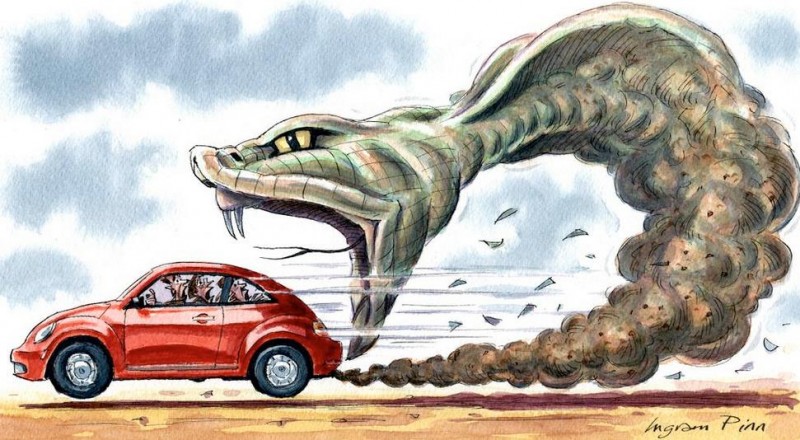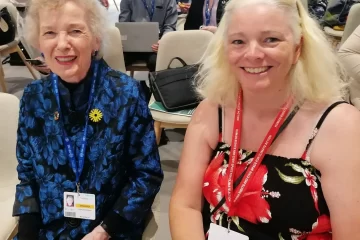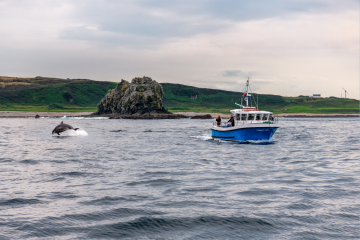Ireland’s 2050 climate target: too little, too late

3 November 2020
Language of “degrees” and “targets” often alienates people from the climate crisis.
Yet, while they might seem abstract, boring, or wonkish, these figures in represent a global struggle for power and justice.
Debates about Ireland’s role in this struggle are currently underway, as Ireland’s 2020 Climate Bill undergoes pre-legislative scrutiny before the Oireachtas Committee on Climate Action.
The headline goal of this Bill, known as the National Climate Objective, commits the Irish government to pursuing a “transition to a climate resilient and climate neutral economy by the end of the year 2050.”
But when it comes to the reality of climate justice, this target is nowhere near enough.
“Climate neutral”
A ‘climate neutral economy’ is defined within the Bill as “a sustainable economy, where greenhouse gas emissions are balanced or exceeded by the removal of greenhouse gases” (emphasis added).
Climate neutral, more commonly known as “net-zero”, refers to the balancing of greenhouse gas emissions through the absorption or removal of equivalent emissions.
Notably, this target does not specify how much Ireland’s emissions are expected to be reduced. Rather it looks at how much our emissions are expected to be “balanced/removed.” This balancing act can, in theory, occur through natural or technological measures.
Natural measures include ‘carbon sinks’ (i.e. a reservoir which captures more carbon than it releases – note that forestry in Ireland has in recent years become a source of emissions, rather than a sink).
Technological measures refer to “Negative Emissions Technologies” including Bioenergy with Carbon Capture and Storage (BECCS), one of the IPCC’s most popular methods.
However, West Offaly Peat and Biomass station was recently refused planning permission on the grounds that Ireland does not have indigenous sources of biomass, and importing biomass would be unsustainable and a breach of EU and national policy.
There is currently no realistic or safe method of balancing or removing Ireland’s current level of emissions.
When it comes to technological measures, they do not exist at scale and the unintended consequences of deploying them remain uncertain.
In the absence of viable technologies, Ireland has no alternative but to reduce its emissions rapidly and deeply. So, how soon does this need to happen?
A 2050 target
In order to achieve what the Intergovernmental Panel for Climate Change terms a “reasonable chance” (66%) of limiting global temperature increase to 1.5°C, we must remain within a global emissions budget of 420 gigatonnes of CO2.
If global emissions fail to decrease, this emissions budget could be exhausted as early as 2027.
A 66% chance of remaining within 1.5°C does not exactly represent good odds. This emissions budget furthermore excludes feedback loops, non-linear tipping points, or additional warming hidden by air pollution.
In short, our chances of remaining within a 1.5°C world are increasingly uncertain.
It is worth pointing out here that 1.5°C is not a ‘safe’ level of global warming. With 1.5°C of warming, five hundred million people will be exposed and vulnerable to water stress, 36 million people could see lower crop yields, and up to 4.5 billion people could be exposed to heat waves.
This is not to portray the climate crisis as a future problem. There is no safe level of global warming and the impacts of the climate crisis at 1°C have already been devastating, particularly in countries and communities that have contributed least to the problem.
The 2050 target included in Ireland’s 2020 Climate Bill, however, does not represent any effort to remain within even a 1.5°C target, not to mention Ireland’s fair share of the rapidly depleting 1.5°C global emissions budget.
The United Nations Environment Programme’s 2016 Emissions Gap Report noted that “all available scenarios consistent with the 1.5°C goal imply that global greenhouse gas emissions peak before 2020.”
Ireland has already missed the safest decarbonisation target – 2020 at the latest – and instead, continued to contribute disproportionately to the climate crisis.
Our emissions soared by 10% between 1990-2020, despite the Irish government’s repeated acceptance that they should be reduced 25-40%.
Irish academics now estimate that Ireland will enter into carbon debt as early as 2024.
The Climate Equity Reference Project estimates that, based on equity (fairness), Ireland’s emissions should be reduced 243% below 1990 levels by 2030.
Reductions based on equity would essentially commit Ireland to achieving complete decarbonization by 2030 at the very latest.
This would include natural measures, compatible with biodiversity, to draw carbon back into the soil, as well as paying reparations in the form of financing emissions reductions efforts overseas.
Critically, Ireland’s emissions reductions must include aviation and shipping, sectors which to date have continued to lobby outside of the Paris Agreement.
This is particularly pertinent given that Ireland is a hub for aircraft leasing and financing.
Not too small to count: a human rights perspective
In the context of global mitigation efforts, you might find yourself asking: what part can a small nation like Ireland really play?
Developed countries like Ireland should not shirk its responsibility on the grounds that our emissions are relatively small on a global scale, that they do not have much impact or that other countries are not doing their fair share either.
In the landmark Urgenda judgment, the Dutch Supreme Court cogently argued based on Article 2 and 8 of the European Convention on Human Rights (ECHR) that partial fault for climate change also justifies partial responsibility.
Another rights-based climate case recently filed by a group of youth plaintiffs in Germany is alleging that a 55% reduction in emissions by 2030 compared with 1990 levels amounts to a violation of German basic law and Article 2 and 8 of the ECHR.
Given that German emissions decreased 36% from 1990-2020, while Ireland’s exponentially increased, there is a strong case to be made on human rights grounds that Ireland needs to do significantly more to make up for decades of delayed climate action.
A complaint has been filed with the European Court of Human Rights against Ireland and 32 other countries alleging that by failing to sufficiently reduce emissions these countries are violating a group of Portuguese youth plaintiffs’ rights under Article 2, 8 and 14 of the ECHR.
What is more, although the Irish Supreme Court did not directly address the issue in Climate Case Ireland, it did leave the doors open for future rights-based climate litigation.
What the burgeoning area of rights-based climate litigation teaches us is that weak mitigation policies and climate framework legislation cannot be immunised from legal challenge on constitutional and human rights grounds.
A better option is “substantial and sustained” real emission reductions and this can be achieved through the Climate Bill 2020.
So, what can be done?
It is not enough for legislators to make incremental improvements on a terribly weak 2015 Climate Act.
A net-zero by 2050 target puts the current “ambition” of Ireland’s 2020 Climate Bill in league with climate commitments of the wealthiest oil companies in the world: BP, Shell, Total, and Repsol.
This Bill does not represent science or climate justice and may still run into legal difficulties from a fundamental rights perspective.
As Dr. Andrew Jackson pointed out during his presentation to the Oireachtas Committee on Climate Action, Ireland’s 2020 Climate Bill should be considered “second-generation climate legislation.”
Legislators should have learned from the grave mistakes made within Ireland’s 2015 Climate Act. At a time when Irish citizens have never been more attuned to how science informs legislation and policy, we urgently need a Climate Bill that aligns with science and climate justice.
To this end, the National Climate Objective should be entirely revised.
Rather than an ambiguous and unjust target of carbon neutrality by 2050, Ireland’s 2020 Climate Bill should instead enshrine a solemn commitment to complete decarbonisation by 2030 at the latest, and to making an equitable and scientifically-sound contribution to keeping within 1.5°C.
Successive Irish governments have to date marched past every scientific warning and threshold with impunity. It is now critical that a 1.5°C temperature limit alongside climate justice and a just transition are explicitly recognised as the central organising principles of this new piece of climate legislation.
Clodagh Daly is the campaign coordinator of Climate Case Ireland and a research assistant on the Effective Nature Law project at UCD Sutherland School of Law. Orla Kelleher is a PhD student in the UCD Sutherland School of Law working on rights-based climate litigation.







